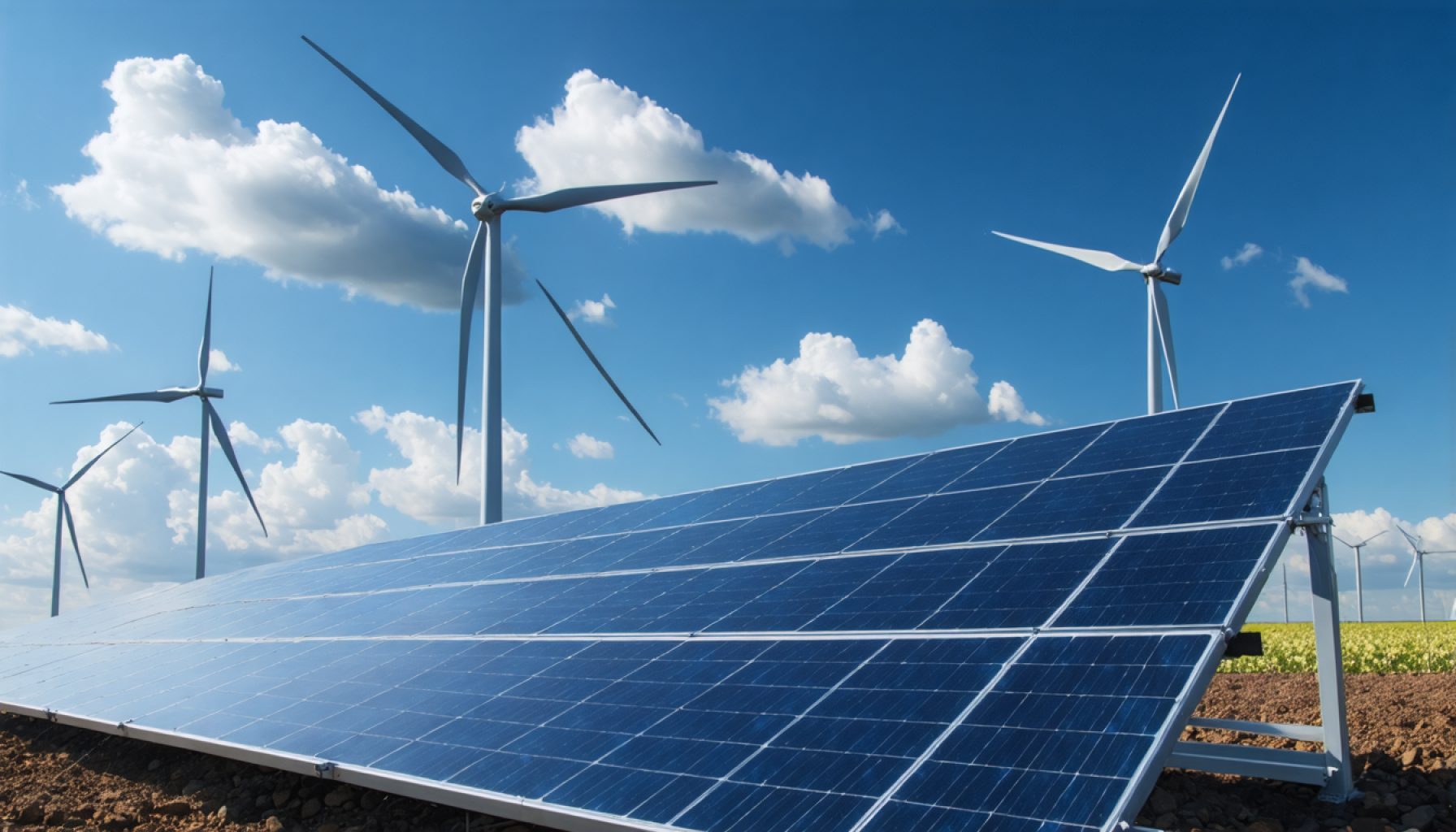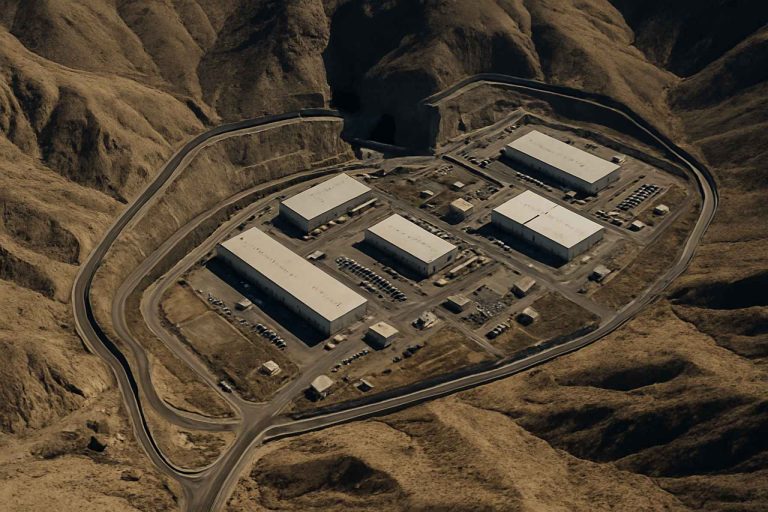
- Wind and solar energies are revolutionizing global power, surpassing traditional fossil fuels and reshaping energy landscapes.
- Advancements in technology are enhancing efficiency, with innovative wind turbine designs and solar panels integrating into urban environments.
- This renewable shift is transforming societies, enabling emerging economies to bypass traditional energy dependencies.
- Renewable energy significantly reduces carbon emissions, offering hope in combating climate change and revitalizing ecosystems.
- While challenges in energy storage, grid integration, and policy persist, strategic investments and cooperation are paving the way forward.
- The rise of renewables signals a tangible shift toward a sustainable and resilient future for generations to come.
Amidst the shifting landscapes of global energy, a vibrant revolution unfolds with the rhythmic whisper of wind turbines and the gentle embrace of sunlight on vast solar panels. Every blade that cuts through the air, every photon captured, is a chapter in humanity’s quest for clean, sustainable power. As we stand on the cusp of a new era in renewables, wind and solar energies are not merely supplementing traditional power sources; they are redefining the very essence of how communities and industries power their lives.
Ascending to the forefront of energy production, these renewable giants are dismantling the dominion of fossil fuels. Wind farms now sprawl across rolling hills and coastal plains, each turbine a sentinel holding promises of limitless energy. Parallel to them, solar fields emerge like shimmering seas of mirrored light, their potential as boundless as the skies they reflect.
But this renaissance isn’t just about technology; it’s about transformation on an unparalleled scale. Innovation is the heartbeat of this movement. Today’s engineers and scientists harness the winds with ferocious efficiency, crafting blades that extract more power with every rotation. Solar panels, once cumbersome and costly, now integrate seamlessly into urban skylines and rooftops, democratizing energy access and flipping the switch on environmental impact.
Beyond the horizon of installed capacities and technological advancements, the true power of these renewables is societal. Clean energy champions a new world order, one where entire regions once reliant on coal or oil are rewiring their future. Emerging economies, powered by vast solar arrays and resilient wind farms, are leaping beyond the constraints of traditional resource dependencies.
As renewable energy surges forward, the impact on climate change is undeniably profound. The decrease in carbon emissions revitalizes ecosystems, presenting a glimmer of hope in the fight against global warming. Families breathe cleaner air, lakes and rivers sparkle with renewed clarity, and the natural world begins to heal from centuries of industrial scarring.
The pathway forward, however, is not without its obstacles. Energy storage, grid integration, and policy frameworks remain formidable challenges. Yet, the momentum is undeniable. Strategic investments and international cooperation are lightening the burden, carving a clear trajectory towards a renewable-dominated future.
At the heart of this change lies a pivotal message: The era of renewable energy is no longer a distant dream but a vibrant reality. As societies adapt and embrace this transformation, the ripple effects will transcend generations, fostering a legacy of sustainability and resilience. Humanity stands on the precipice of a cleaner, greener future, driven by winds of change and the relentless quest for solar brilliance. The journey has only just begun.
The Renewable Energy Horizon: Unlocking a Sustainable Future
Unveiling the Renewable Energy Revolution
In recent years, the global shift towards renewable energy has gained unprecedented momentum, fundamentally altering the way societies generate and consume power. As the demand for clean energy sources surges, wind and solar power are not only emerging as viable alternatives but are becoming central players in the global energy market.
How Wind and Solar Power the Future
1. Efficiency and Technological Innovations:
– Modern wind turbines are now capable of generating power even at low wind speeds, thanks to advancements in blade design and materials. For example, companies like Ørsted and Vestas are leading the charge in producing more efficient and powerful turbines.
– Solar technology has also evolved, with photovoltaic (PV) cells reaching higher efficiencies and costs dropping dramatically. The International Renewable Energy Agency (IRENA) reports a 90% decrease in solar panel costs since the year 2000.
2. Real-World Applications:
– In countries like Germany and Denmark, renewable energy sources already account for more than 40% of their electricity consumption.
– In the United States, Texas is not only an oil giant but is also leading in wind energy production, proving the flexibility and scalability of renewables.
3. Market Forecasts & Industry Trends:
– The International Energy Agency (IEA) predicts that by 2025, renewables will overtake coal as the largest source of electricity generation worldwide.
– The global renewable energy market is expected to continue growing at a compound annual growth rate (CAGR) of over 8% for the foreseeable future.
Addressing Common Concerns
Challenges in Energy Storage:
– A primary obstacle is energy storage. Innovative solutions such as lithium-ion batteries, pumped-storage hydropower, and emerging technologies like hydrogen storage are being developed to address this.
Grid Integration:
– Integrating wind and solar power into existing grids requires upgrades and smart grid solutions to handle variability and maintain steady power output.
Policy Frameworks:
– Government policies play a crucial role. Renewable energy incentives, carbon credits, and international cooperation are essential to encourage widespread adoption.
Pros and Cons Overview
Pros:
– Reduction in carbon emissions.
– Decreasing costs and increasing efficiency.
– Energy independence from fossil fuels.
– Creation of green jobs and economic growth.
Cons:
– Initial investment and infrastructure costs.
– Intermittency and reliability concerns.
– Land and wildlife impact.
Actionable Recommendations
1. For Homeowners:
– Consider installing solar panels to reduce electricity bills and carbon footprint. Utilize incentives or tax credits where available.
2. For Businesses:
– Invest in renewable energy certificates (RECs) to support clean energy projects and enhance sustainability credentials.
3. For Policymakers:
– Promote subsidized financing options to make renewable technology accessible to wider populations.
– Foster international partnerships to accelerate the exchange of technology and expertise.
Conclusion
A sustainable, renewable-powered future is rapidly becoming a reality. With strategic investments, continued innovation, and collective action worldwide, the journey towards a cleaner planet is well underway. Harness the winds of change and capture solar brilliance to lead a legacy of sustainability for generations to come.
For comprehensive insights and more on renewable energy developments, visit REN21 and IRENA.



